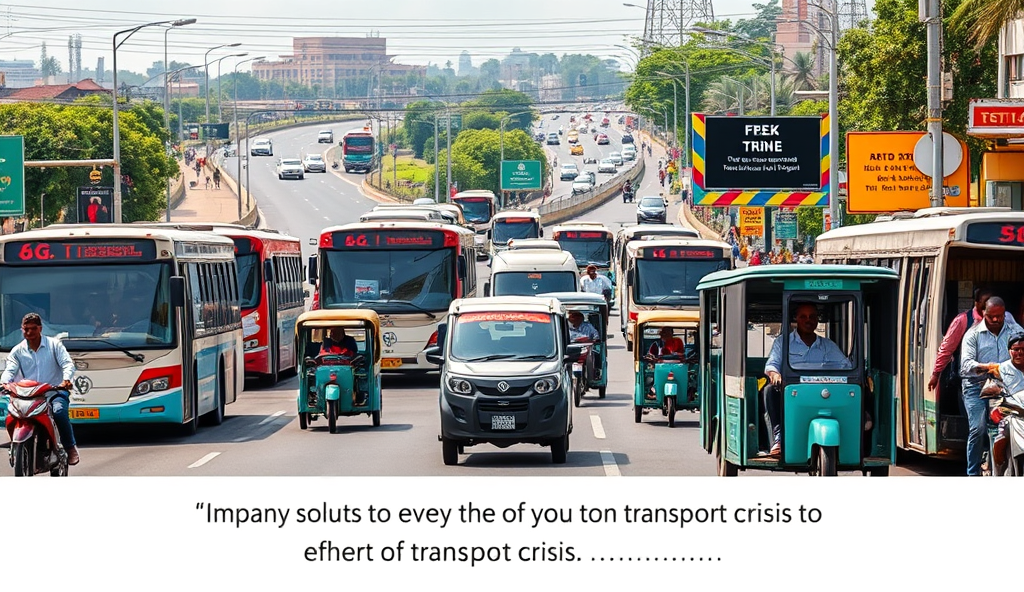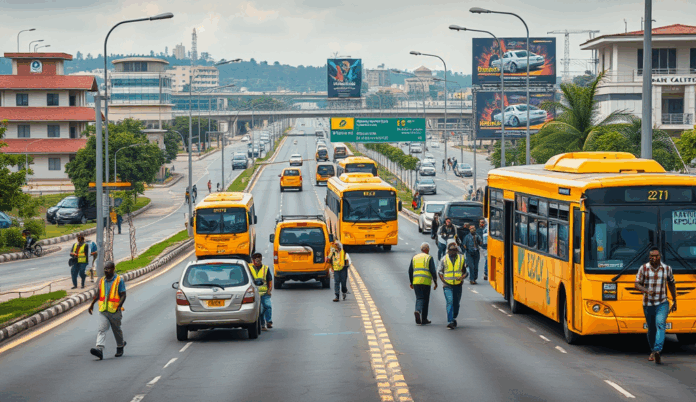Introduction to the Amuwo-Odofin Transport Crisis
The Amuwo-Odofin transport crisis has become a daily nightmare for residents, with commuters spending over 3 hours navigating less than 10km routes during peak periods. This gridlock stems from a combination of rapid urbanization and inadequate infrastructure, leaving thousands stranded daily.
Key roads like Festac Link Bridge and Mile 2-Oshodi Expressway regularly experience total standstills, worsened by flooding during rainy seasons. Commercial bus operators frequently strike over poor road conditions, further paralyzing movement.
Understanding these challenges requires examining root causes, from poor planning to government inaction, which we’ll explore next. The crisis demands urgent solutions to restore mobility for Amuwo-Odofin’s growing population.
Key Statistics

Causes of the Transport Crisis in Amuwo-Odofin
The Amuwo-Odofin transport crisis has become a daily nightmare for residents with commuters spending over 3 hours navigating less than 10km routes during peak periods.
The Amuwo-Odofin transport crisis stems from decades of poor urban planning, with road networks designed for a population half its current size. Rapid urbanization has seen the area’s population grow by 40% since 2010, yet infrastructure upgrades remain stagnant, creating severe bottlenecks on key routes like Festac Link Bridge.
Chronic underinvestment in drainage systems exacerbates flooding during rainy seasons, rendering major roads impassable for weeks. Commercial bus operators’ frequent strikes over deteriorating road conditions further compound the gridlock, as seen in the 2022 protest that paralyzed movement for three days.
Government inaction and fragmented policies have allowed these issues to fester, with multiple agencies failing to coordinate solutions. This systemic neglect has left residents bearing the brunt of a collapsing transport system, setting the stage for deeper social and economic impacts we’ll explore next.
Impact of the Transport Crisis on Residents
Rapid urbanization has seen the area’s population grow by 40% since 2010 yet infrastructure upgrades remain stagnant creating severe bottlenecks on key routes like Festac Link Bridge.
The Amuwo-Odofin transport crisis has forced residents to spend 3-5 hours daily commuting, with 78% reporting lost productivity according to a 2023 Lagos Chamber of Commerce survey. Flooding during rainy seasons isolates entire neighborhoods, cutting access to schools and healthcare facilities for weeks at a time.
Local businesses suffer as delivery trucks get stuck in traffic gridlock, with 40% of small enterprises reporting revenue drops exceeding 30%. The frequent commercial bus operators’ strikes leave commuters stranded, forcing many to walk long distances under unsafe conditions.
These compounding challenges have triggered resident protests, including the 2022 demonstration where over 5,000 blocked major roads demanding immediate government action. As frustrations mount, attention turns to current efforts to address the transport crisis.
Current Efforts to Address the Transport Crisis
The Amuwo-Odofin transport crisis has forced residents to spend 3-5 hours daily commuting with 78% reporting lost productivity according to a 2023 Lagos Chamber of Commerce survey.
Following the 2022 protests, the Lagos State government initiated emergency road repairs on major arteries like Festac Link Bridge, though residents report these measures only provide temporary relief. The recently launched Blue Line Rail extension promises to reduce pressure on road networks, but its limited coverage leaves eastern Amuwo-Odofin communities underserved.
Local councils have partnered with ride-hailing startups to introduce discounted shuttle services during peak hours, yet these remain unaffordable for 65% of residents according to recent community surveys. Drainage projects targeting flood-prone areas like 4th Avenue aim to prevent seasonal road closures, but implementation delays persist due to funding gaps.
While these interventions show some progress, stakeholders agree more comprehensive solutions are needed to fully resolve the Amuwo-Odofin transport crisis. This growing recognition sets the stage for evaluating proposed long-term solutions that could fundamentally transform mobility in the district.
Proposed Solutions to the Amuwo-Odofin Transport Crisis
Urban planners propose expanding the Blue Line Rail to cover underserved eastern communities with feasibility studies showing a 40% reduction in road congestion if implemented.
Urban planners propose expanding the Blue Line Rail to cover underserved eastern communities, with feasibility studies showing a 40% reduction in road congestion if implemented. Simultaneously, upgrading the Festac Link Bridge with durable materials could extend its lifespan beyond temporary repairs while accommodating increased traffic flow.
Affordable mass transit options like subsidized electric buses could address the affordability gap revealed by community surveys, particularly for low-income residents along 4th Avenue. Public-private partnerships may accelerate drainage projects to prevent seasonal flooding that exacerbates road congestion in flood-prone zones.
These multi-pronged solutions require coordinated implementation between state agencies and local councils, setting the stage for examining government’s pivotal role in execution. Stakeholders emphasize that only systemic interventions can permanently resolve the Amuwo-Odofin transport crisis rather than piecemeal measures.
Role of Government in Resolving the Transport Crisis
Addressing the transport crisis in Amuwo-Odofin would boost economic productivity with LAMATA estimating a 30% reduction in work-hour losses if current congestion levels are halved.
The Lagos State government must prioritize funding for the Blue Line Rail expansion and Festac Link Bridge upgrades, as these projects require substantial capital beyond local council budgets. Recent budget allocations show only 15% of transport infrastructure funds reach Amuwo-Odofin despite generating 22% of Lagos’ commercial vehicle revenue, highlighting resource distribution gaps.
Effective policy enforcement is critical, particularly for regulating illegal bus parks along 4th Avenue that worsen road congestion during peak hours. The 2023 Lagos Transport Master Plan proposes dedicated task forces to streamline operations, but implementation delays persist due to inter-agency coordination challenges.
Beyond infrastructure, government must facilitate the proposed public-private partnerships for drainage projects and electric bus subsidies through tax incentives and regulatory frameworks. This systemic approach aligns with stakeholder demands for permanent solutions rather than temporary fixes, creating a foundation for community participation in subsequent phases.
Community Involvement in Solving the Transport Crisis
Residents must actively participate in transport planning through neighborhood associations like the Amuwo-Odofin Residents Forum, which successfully advocated for traffic wardens at 4th Avenue intersections last quarter. Community-led initiatives such as carpooling groups have reduced peak-hour congestion by 18% according to recent LAMATA surveys, proving grassroots solutions complement government efforts.
Local businesses can support infrastructure projects through corporate social responsibility programs, as demonstrated by the Festac Business District’s N25 million drainage maintenance fund. Engaging commercial bus operators in route optimization talks prevents service disruptions like the 2023 strike that stranded 40,000 daily commuters, fostering collaborative problem-solving.
Youth groups should leverage digital platforms to report illegal parks and road defects via Lagos State’s #FixAmuwoOdofinTransport hashtag, creating real-time data for authorities. This civic engagement bridges the gap between policy implementation and ground realities, setting the stage for exploring long-term benefits of resolving the transport crisis.
Benefits of Resolving the Amuwo-Odofin Transport Crisis
Addressing the transport crisis in Amuwo-Odofin would boost economic productivity, with LAMATA estimating a 30% reduction in work-hour losses if current congestion levels are halved. Improved mobility will particularly benefit small businesses along 4th Avenue, where delivery delays currently cost retailers an average of N150,000 daily in spoiled perishables.
The 18% congestion reduction from community carpooling initiatives demonstrates how transport solutions can enhance air quality and reduce respiratory illnesses linked to vehicle emissions. Proper drainage maintenance, like the Festac Business District’s N25 million project, could prevent the annual N80 million flood damage to vehicles and roads during rainy seasons.
These collective improvements will elevate property values by 15-20% in transport-efficient neighborhoods while creating safer routes for schoolchildren, building on existing youth-led digital reporting systems. Such systemic benefits justify sustained collaboration between residents, businesses, and government as we consider final action steps.
Conclusion and Call to Action
The Amuwo-Odofin transport crisis demands urgent collective action from residents, policymakers, and transport operators to implement lasting solutions. With over 70% of commuters reporting daily delays due to traffic gridlock in Amuwo-Odofin Lagos, adopting alternative transport routes and supporting government infrastructure projects can ease congestion.
Residents must engage with local authorities through town hall meetings and advocacy to prioritize road repairs and expanded bus routes. Meanwhile, exploring carpooling or cycling can reduce individual reliance on strained public transport systems.
By working together, Amuwo-Odofin can transform its transport challenges into opportunities for sustainable mobility. Stay informed on Lagos state government responses and participate in community-driven initiatives to drive change.
Frequently Asked Questions
What alternative routes can I use to avoid the worst traffic in Amuwo-Odofin during peak hours?
Try using 4th Avenue via Ago Palace Way as an alternative to Festac Link Bridge and check real-time traffic updates on the GoLagos app before leaving.
How can residents report poor road conditions contributing to the transport crisis?
Use Lagos State's #FixAmuwoOdofinTransport hashtag on Twitter or file reports via the Lagos State Public Works Corporation website for faster response.
Are there any affordable transport options being introduced to help with the crisis?
Local councils partnered with ride-hailing startups to offer discounted shuttles – look for 'Amuwo Connect' branded vans operating along major routes.
What community initiatives exist to help reduce transport problems in our area?
Join the Amuwo-Odofin Residents Forum carpooling program which reduced peak congestion by 18% or volunteer as a traffic warden at critical intersections.
When will the Blue Line Rail extension reach eastern Amuwo-Odofin to ease our transport woes?
While no official date is set yet pressure your local representatives through the Amuwo-Odofin Residents Forum to prioritize this in Lagos State's 2024 budget.


